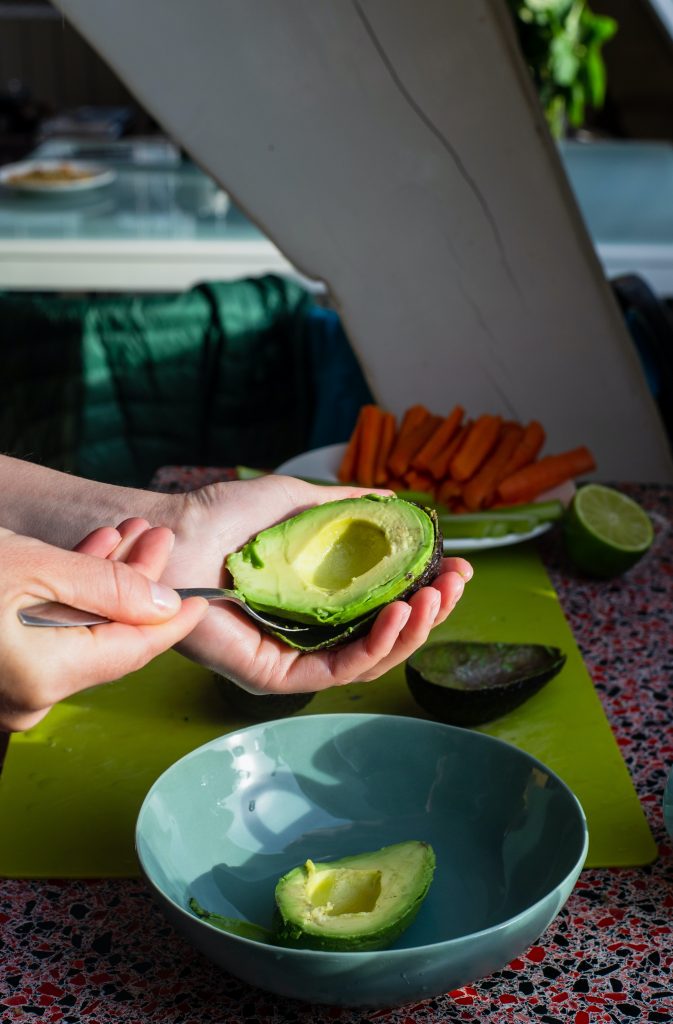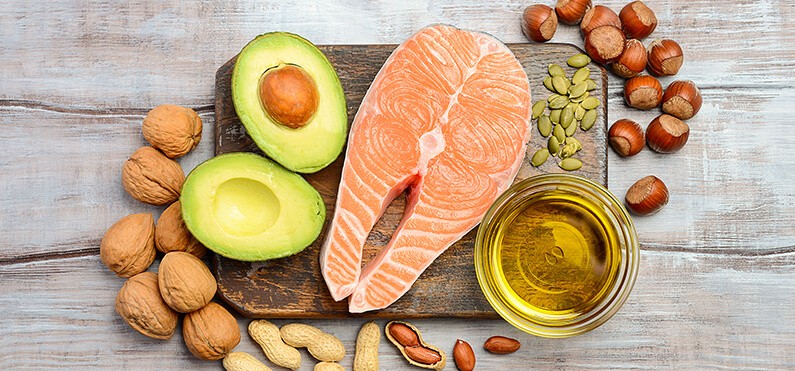Reduce pain and inflammation with fabulous fats
Are you a high-achiever? Your diary is always full and you are constantly on the go. From the outside, you’re doing great, overachieving at life. But inside, you’re rattled by feelings of anxiety, hormonal imbalances and brain fog so thick you don’t know which way to turn.
I see you. I’ve been there and as a Functional Nutritionist I work with women just like you.
Given everything that’s going on in the world right now, I know these feels are exacerbated. You’re juggling kids, a career, marriage and worrying about elderly parents – you increasingly find yourself paralysed by overwhelm and are already dreading approaching your next period.
Chronic, low-grade inflammation could be the culprit. Stressful lifestyles, over exercising and unhelpful dietary choices can all increase your level of systemic inflammation, leading to those familiar feelings of anxiety, overwhelm and hormonal imbalances – heavy, painful periods or worsening perimenopause symptoms anyone?! The food you choose to eat day-to-day, alongside good quality sleep, stress management and nourishing movement, play a huge role in the way you thrive at work, be present for your loved ones and feel fulfilled.
In this article we’re going to explore the role of fats in the low-grade inflammation and its associated symptoms. This is topic that is often overlooked but one that plays a critical role in the way you feel day-to-day and in the progression of your symptoms. By choosing the right fats and using them correctly, you can reduce inflammation to help bring back those feelings of calm, clarity and optimism, allowing you to thrive once again.

So, why are fats so important for inflammation?
The fats we eat in our diet are made up of fatty acids - namely saturated, monounsaturated and polyunsaturated fatty acids – each with their own unique properties and functions within the body. Some fatty acids are viewed as being inflammatory, while others, such as polyunsaturated omega-3, are protective and are known to reduce inflammation.
For a number of years now saturated fat has been painted as the bad guy, but the story is a lot more complex. Saturated fats are essential and may actually be a better choice for some methods of cooking due to the stability of their molecular structure. Saturated fatty acids are more stable at high heats compared to unsaturated fatty acids, which break down much more easily in a process called ‘oxidation’. Oxidation of fatty acids results in the production of free radicals - unstable molecules which can damage nearby healthy cells – which in turn can increase inflammation.
Mono and polyunsaturated fats, such as those found in abundance in things like avocado, oily fish and nuts and seeds, are known to have anti-inflammatory effects. These fats are protective against inflammation and free radical damage so should be included in the diet regularly. Another important consideration is the ratio of polyunsaturated fats you consume. The two major classes of polyunsaturated fats are omega-3 and omega-6; while both are essential, we should be consuming nearly equal amounts of omega-3 than omega-6, as too much omega-6 can exacerbate inflammation. This happens because both of these fatty acids compete for the same metabolic pathway when being utilised by the body – while the breakdown of omega-3 produces anti-inflammatory byproducts, such as resolvins and protectins, omega-6 breakdown produces factors including prostaglandins and leukotreines, which are pro-inflammatory. Unfortunately, the typical Western diet rich in ‘vegetable’ oils and processed foods tends to be high in omega-6 and low in omega-3. As such, to ensure an ideal omega3/6 ratio, it is important to choose sources of fats high in omega-3, such as oily fish, chia seeds, flaxseed and cold pressed walnut oil, and avoid vegetable oil.
Are there any other considerations when choosing fats to reduce inflammation?
The way that oils and fats are processed and stored can influence their inflammatory potential – light-coloured oils like vegetable and sunflower oils are usually heat treated, resulting in oxidation of the fatty acids, so should be used sparingly or avoided. To limit this, choose oils labelled as cold pressed and ideally organic. Both mono and polyunsaturated fats are also light-sensitive and thus more prone to oxidation than their saturated counterparts. As such, it is important to buy oils in opaque bottles where possible, and store in a cool, dark place to reduce the chance of oxidation occurring. Finally, fatty acids begin to oxidise when exposed to oxygen, so only buy what you need to avoid having bottles hanging around the cupboards for months.
So, which fats should you be looking to include to reduce inflammation? Here are five of the best:
Extra virgin olive oil; high in oleic acid, a monounsaturated fatty, extra virgin olive oil is a great all-rounder anti-inflammatory fat. Use it to dress salads or drizzle over meat and fish. With an above average smoke point, you can also use olive oil when cooking at lower temperatures, such as when baking or roasting
Coconut oil; coconut oil has a unique fatty acid profile and contains a high level of medium-chain triglycerides which has many proven health benefits. As a saturated fat, coconut oil can be used when cooking at both high and low temperatures, so is a great choice for frying or baking.
Rapeseed oil; predominantly comprised of mono and polyunsaturated fatty acids, rapeseed oil should be used cold in salad dressings or for drizzling or dipping.
Flaxseed oil; flaxseed oil contains high amounts of plant-based omega-3 (alpha-linolenic acid) so is perfect for restoring your omega-3/6 ratio. Use similarly to rapeseed oil.
Butter or ghee; rich in saturated fat, it remains stable at high temperatures so should be chosen over mono or polyunsaturated fats when frying at high temperatures. Choose grass-fed and organic where possible.

At this point, in case you are wondering how you can implement all this information in your day-to-day:
I have put together a helpful guide to provide you with everything you need to know about using the most common fats and oils in our diets, along with suggestions on which ones are best for high and low heat cooking, those which should be used cold, and those best avoided.
The fatty acid composition of fats and oils, their smoke point (the temperature at which fatty acids begin to break down) and the way they are processed and stored can all influence their inflammatory potential, so it is incredibly important to choose the right fat for the right job. All fats are comprised of different types of fatty acids – namely saturated, monounsaturated and polyunsaturated. Fats made up predominantly of mono and polyunsaturated fatty acids are more unstable and can be damaged by light and heat and are thus prone to becoming rancid, resulting in oxidation of the fatty acids – this is important because oxidative stress a key cause of inflammation in the body. Fats comprised predominantly of saturated fatty acids are most stable and less likely to become oxidised, making them a better choice for high heat cooking.
References
Orsavova, J., Miscurcova, L., Vavra Ambrozova, J., Vicha, R., Mlek, J. 2015. Fatty Acids Composition of Vegetable Oils and Its Contribution to Dietary Energy Intake and Dependence of Cardiovascular Mortality on Dietary Intake of Fatty Acids. International Journal of Molecular Sciences, 16 (6), 12871-12890
Personal Nutrition, 6th ed., Boyle & Anderson, Thomson/Wadsworth, 2007. Available here
British Nutrition Foundation. 2009. Oils and fats in the diet. Available here

